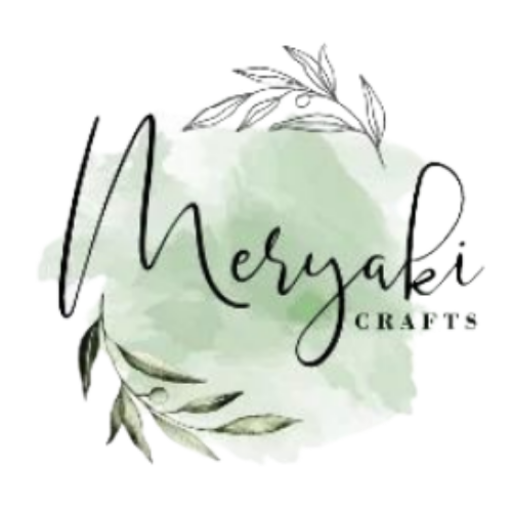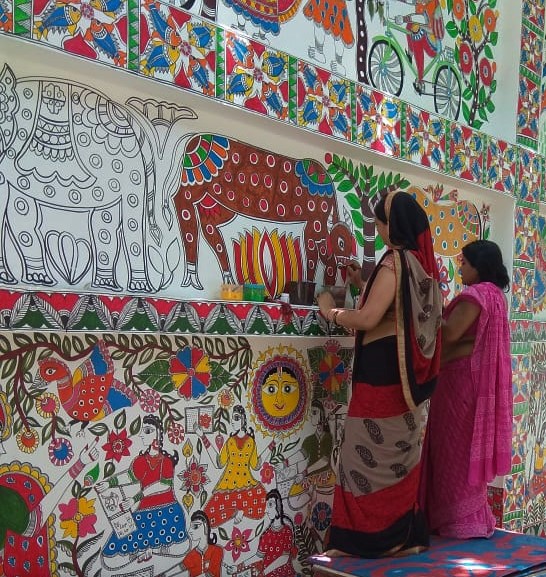BHITTI CHITRA – THE POSITIVE STROKES OF MADHUBANI ART
A GI tagged art form, Madhubani Art is perhaps among the most well known crafts in India. With mentions in the Ramayana, that can be traced all the way to King Janaka from Nepal, this much loved art form has received international attention and awards.
The vibrant Madhubani trail
Filled with rich details down to it’s very name, Madhubani is an art form that got its name from the Madhubani forest. Serving as an important source of livelihood for the village community, local villagers who lived in the area surrounding this forest, procured honey from it and sold it, as a means of earnings.
Literally translated, Madhubani means ‘Forest of Honey’. Originally painted on freshly plastered walls or floors of the hut, it was mainly created by the women of the house and the art was passed on from mother to daughter.
According to mythology, Raja Janaka, Sita’s father from the Ramayana, commissioned artists to decorate his entire kingdom on the occasion of his daughter’s marriage to Lord Rama.
The art remained largely restricted to Madhubani in Bihar and areas of Nepal, remaining in oblivion till 1934.
A massive earthquake in the Madhubani region that year, had William Archer, a British officer, survey the area for damage and loss caused by it. During his survey, he stumbled upon these colourful paintings that were artistically created on the walls of the homes.
Excitedly, he took many pictures of the art, and later published an article in the Indian art Journal of 1949. This is the first time it got public attention, and people got to know about these amazing paintings.
A severe drought during the 1960’s inspired the Indian Handicraft board to encourage the Madhubani women to practice it as a form of livelihood, and create it on paper. Madhubani artist Sita Devi was the first artist to receive a state award by the government of Bihar, and this gave the first official recognition to Madhubani paintings.
How is Madhubani created?
Madhubani was originally painted on walls and floors of the mud huts in that region. In earlier times, with the aid of fingers, nib-pens, matchsticks, twigs, squirrel hair, etc the beautiful Madhubani Art was created. Natural dyes and pigments were used such as turmeric for yellow, soot for black, vermilion for red, etc.
Nowadays, with the advent of paintbrushes and commercial colors, some artisans have switched their mode of art creation.
The themes and motifs originate from folklore and mythology. Traditionally, the motifs and symbols revolved around fertility and birth. Symbols like the lotus, snakes, fishes and birds in union, were the motifs drawn. The other motifs include god and goddesses, flora and fauna, different stories from the Ramayana, and Krishna leela.
The painting style is such that there is very little or no space left between motifs, and gaps are filled with lines. The designs are mainly geometric by nature. Weddings, childbirth, and other important events are marked with colourful paintings and patterns. Like, for example, the Kobhar ghar. The room where the newly married couple spend their honeymoon period. The walls are specifically painted with fertility and nuptial symbols to ensure good luck and many children.
The paintings have now evolved to being created on paper in order to sell the art as wall decor. The paper is usually handmade paper, and cow dung is applied to it, to keep it pest free, ensuring it’s longevity.
The different styles of Madhubani paintings are Barni, Kachni, Tantrik, Godna and Gobhar. Bharni, Katchni and Tantrik styles are practiced by upper caste women, such as the brahmins and kayasth women. The styles revolve mainly around god and goddesses. The Godna and Khobar styles are practiced by the lower caste women. The motifs revolve around everyday life.
Madhubani today
Madhubani is one of the most popular and well known art forms today. Due to its intricacy and colourful figures and designs, the craft has gained popularity and has evolved onto clothing, furnishings and home utility items.
The patterns and motifs have also evolved and the artisans today use it to convey important teachings and draw attention to social issues such as women’s education, climate change and global warming.
In fact, in 2012, Gram Vikas Parishad, an NGO, encouraged the artisans to paint over 100 trees with the Madhubani paintings. This initiative was undertaken to prevent tree felling and cutting in the name of road widening and expansion. With motifs of Gods and Goddesses beautifully painted on the tree trunks, the villagers and workers refused to cut these trees as a sign of reverence and worship.
Madhubani has gained fame far and wide with commissioned paintings by the Indian government. It has a special place in the Mithila museum in Japan. Displayed in Belgium, London and other countries, it is also in high demand among international art lovers and aficionados.
Proudly own your own piece of Madhubani art, in a mode you prefer! Display it as art to bring life to your home decor, or as furnishings in the form of curtains and drapes sporting these motifs.
Whatever you choose, it will surely bring a positive note to your space, as that is the underlying origin of Madhubani art – Positive motifs beget positive vibes!

